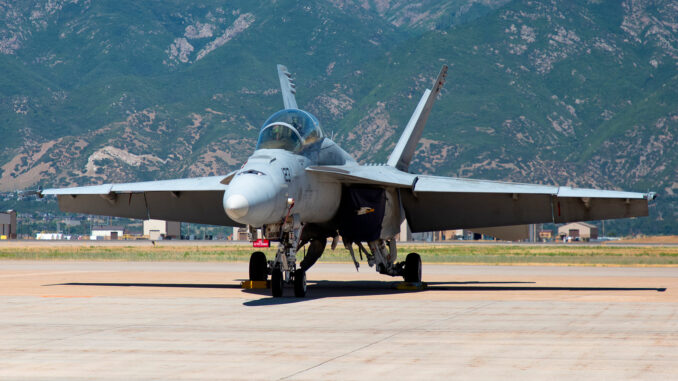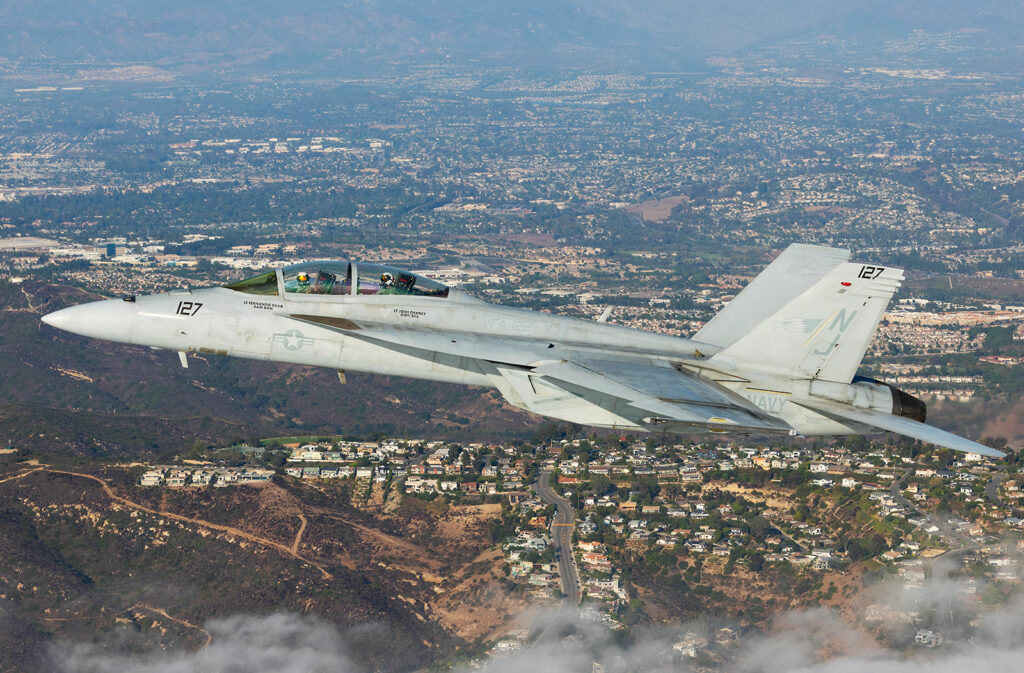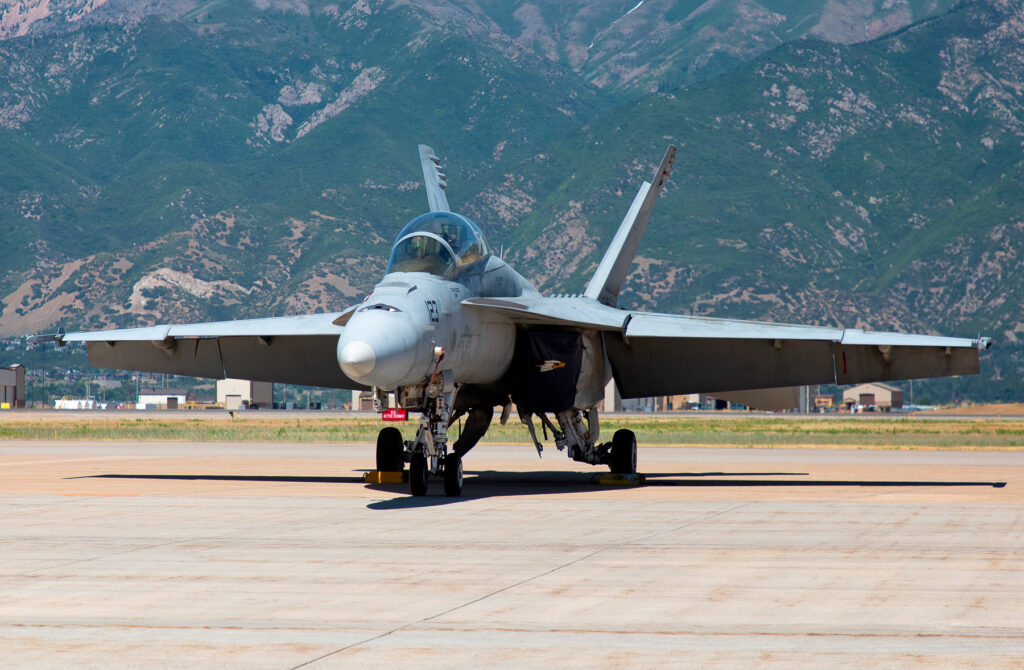
Explore how the F/A-18 Super Hornet remains vital to U.S. naval power amid evolving threats, F-35C integration, and next-gen air combat strategy.
The Boeing F/A-18 Super Hornet has been a cornerstone of U.S. Navy aviation since its introduction in the late 1990s. As a twin-engine, carrier-capable multirole fighter, it has provided critical air superiority, strike, and electronic warfare capabilities across a wide range of missions. Its versatility and robust design have made it the workhorse of naval aviation, particularly as older aircraft like the F-14 Tomcat were retired.
With the introduction of the fifth-generation F-35C, comparisons between the Super Hornet and newer stealth platforms have become increasingly relevant. Questions arise not only around raw performance but also around how each aircraft meets the operational and logistical demands of 21st-century naval warfare.
This article explores the Super Hornet’s current and future relevance by examining three key dimensions: its combat performance relative to the F-35C, long-term maintenance challenges and costs, and its survivability in high-threat environments enhanced by the latest Block III upgrades.

Combat Performance: Super Hornet vs. F-35C
In modern carrier strike groups, the F/A-18 Super Hornet and F-35C fulfill complementary yet distinct operational roles. The Super Hornet, particularly in its two-seat F-model configuration, is a proven multirole platform capable of conducting air interdiction, fleet defense, and close air support. It remains the primary strike fighter for U.S. Navy carriers, forming the backbone of sortie generation due to its availability and mission flexibility.
The F-35C, by contrast, is designed for first-day-of-war operations in highly contested environments. Its stealth profile, advanced sensor fusion, and deep integration into the Navy’s networked battlespace give it a critical advantage in penetrating enemy air defenses and serving as an intelligence and targeting node. While the Super Hornet can carry more external ordnance, it lacks the F-35C’s low-observable capabilities and advanced electronic warfare suite.
Pilot commentary reflects this division of labor. Super Hornet crews emphasize the aircraft’s reliability, ease of maintenance, and adaptability across mission types. F-35C pilots highlight superior situational awareness, stating that the aircraft “sees everything” before adversaries can react, offering a significant edge in beyond-visual-range engagements.
However, trade-offs exist. The Super Hornet’s external fuel tanks and weapons make it more visible to radar and dependent on aerial refueling for extended missions. The F-35C’s internal weapons bays limit payload, and its complex systems demand a higher logistical footprint and lower sortie rate.
Open-source analyses and declassified exercise outcomes suggest a combined force structure is optimal. Super Hornets maintain volume of fire and presence, while F-35Cs shape the battlespace and suppress enemy defenses. Defense analysts consistently emphasize the value of operating both platforms in tandem to maximize flexibility, resilience, and lethality in a distributed maritime operations framework.
Maintenance Realities and Lifecycle Costs
Operating carrier-based aircraft like the F/A-18 Super Hornet presents unique and persistent maintenance challenges. The harsh maritime environment accelerates wear on airframes and systems due to salt corrosion, constant exposure to humidity, and the high-stress dynamics of catapult launches and arrested landings. These factors contribute to metal fatigue, avionics degradation, and recurring structural repairs, all of which increase the aircraft’s maintenance burden over time.
According to U.S. Navy and Government Accountability Office (GAO) reports, the F/A-18E/F has a cost per flight hour averaging between $18,000 and $24,000, depending on the mission type and aircraft age. While still lower than the F-35C, which ranges between $33,000 and $38,000 per flight hour, Super Hornet sustainment costs have risen due to airframe aging and supply chain issues. Parts availability for legacy components, particularly for early-block aircraft, has been flagged as a recurring concern in Navy readiness briefings.
In response, the Navy has initiated the Service Life Modification (SLM) program, which aims to extend the Super Hornet’s operational life from 6,000 to 10,000 flight hours. This effort includes airframe reinforcement, avionics upgrades, and corrosion mitigation—tasks that are both time- and resource-intensive but critical for fleet sustainability. The program also allows for integration of Block III enhancements, ensuring that modernized aircraft remain tactically relevant.
Despite higher readiness rates compared to the F-35C, Super Hornets require increasing depot-level maintenance as they age. The Navy has budgeted billions through the 2030s to maintain and modernize the Super Hornet fleet. These investments reflect both the necessity of keeping the aircraft operationally viable and the challenge of balancing modernization with escalating sustainment demands across an aging tactical air fleet.

Block III Upgrades and Modern Threat Environments
The Block III upgrade package represents the most significant evolution of the F/A-18 Super Hornet since its inception, aimed at enhancing lethality, survivability, and networked warfare capabilities in increasingly contested environments. Central to the upgrade are conformal fuel tanks (CFTs), which add 3,500 pounds of fuel without occupying external hardpoints or increasing radar cross-section. This extends combat range by approximately 100–120 nautical miles—critical for stand-off operations in anti-access/area denial (A2/AD) zones.
The cockpit has been completely redesigned with a large-area touchscreen display and improved pilot-machine interface, facilitating faster decision-making and better sensor management. Upgraded avionics include the AN/APG-79(V)1 Active Electronically Scanned Array (AESA) radar, offering greater detection range, electronic attack capability, and target tracking fidelity. While not a stealth platform, Block III introduces limited radar cross-section reduction through airframe shaping and radar-absorbent materials in key areas.
Perhaps most notably, Block III integrates the Distributed Targeting Processor-Networked (DTP-N) and Tactical Targeting Network Technology (TTNT), significantly improving the Super Hornet’s ability to operate as part of a naval “combat cloud.” This enables real-time data sharing with other platforms such as the E-2D Hawkeye, F-35C, and unmanned systems, enhancing situational awareness and distributed lethality.
However, survivability in heavily defended airspace remains a concern. Systems like Russia’s S-400 and China’s HQ-9 pose advanced multi-layered threats, capable of detecting and engaging non-stealth aircraft at extended ranges. While Block III upgrades improve survivability at the margins—particularly through stand-off munitions and networked cueing—they do not render the Super Hornet fully survivable in denied environments.
Simulations and war games suggest Block III Super Hornets are best employed in conjunction with stealth assets, providing mass and firepower from outside lethal envelopes while leveraging data from forward stealth platforms. Defense analysts view this integration as critical to maintaining air dominance without over-reliance on any single aircraft type.
Strategic Implications for U.S. Naval Aviation
The U.S. Navy’s continued investment in the F/A-18 Super Hornet, even as the F-35C becomes more prevalent, reflects a deliberate strategy grounded in operational flexibility, cost control, and force structure resilience. Despite the F-35C’s advanced stealth and sensor fusion capabilities, the Super Hornet remains indispensable for high-tempo operations, delivering greater sortie rates, simpler maintenance requirements, and a robust multirole platform that can be rapidly adapted to shifting mission demands.
Interoperability is central to this approach. The Navy envisions a layered airpower strategy where stealth assets like the F-35C penetrate contested zones to degrade enemy defenses, while Super Hornets operate in supporting roles, executing long-range strikes, air superiority missions, and electronic attack with platforms like the EA-18G Growler. This distributed force structure maximizes combat effectiveness while reducing the risk of losing critical assets early in a conflict.
Looking ahead, the Navy is preparing for the Next Generation Air Dominance (NGAD) family of systems, with the F/A-XX fighter program at its core. F/A-XX aims to develop a sixth-generation manned aircraft optimized for survivability, sensor integration, and optionally unmanned operations in high-end threat environments. Nevertheless, full NGAD deployment is not expected until the 2030s, necessitating continued reliance on both the Super Hornet and F-35C well into the next decade.
Investing in Block III upgrades and the Service Life Modification program ensures that the Super Hornet remains tactically viable during this transitional period. By maintaining a mixed fleet, the Navy retains strategic flexibility, ensures operational readiness across diverse conflict scenarios, and positions itself to integrate next-generation capabilities without creating a capability gap in the interim. This measured approach supports sustained naval air dominance in an era of accelerating technological and geopolitical change.

A final word
The Boeing F/A-18 Super Hornet remains a vital component of U.S. naval aviation, even as technological advancements and evolving threats reshape the character of aerial warfare. In terms of performance, the Super Hornet continues to deliver versatile, carrier-based strike and air superiority capabilities, complementing the stealth and advanced networking of the F-35C. Together, they form a layered airpower approach that balances penetration, persistence, and massed firepower.
While the Super Hornet’s maintenance costs are rising with age, programs like Service Life Modification (SLM) and Block III upgrades are effectively extending its operational relevance. These initiatives address key issues such as fatigue, corrosion, and outdated systems, ensuring that the platform can meet operational demands through at least the early 2030s.
Survivability in heavily contested airspace remains a limiting factor. However, Block III enhancements improve its range, connectivity, and resilience, especially when operating as part of a networked joint force.
Given its upgraded capabilities and strategic role within the carrier air wing, the F/A-18 Super Hornet will remain a viable and necessary platform through the next decade—bridging the gap until sixth-generation aircraft like the F/A-XX fully arrive on deck.
War Wings Daily is an independant magazine.